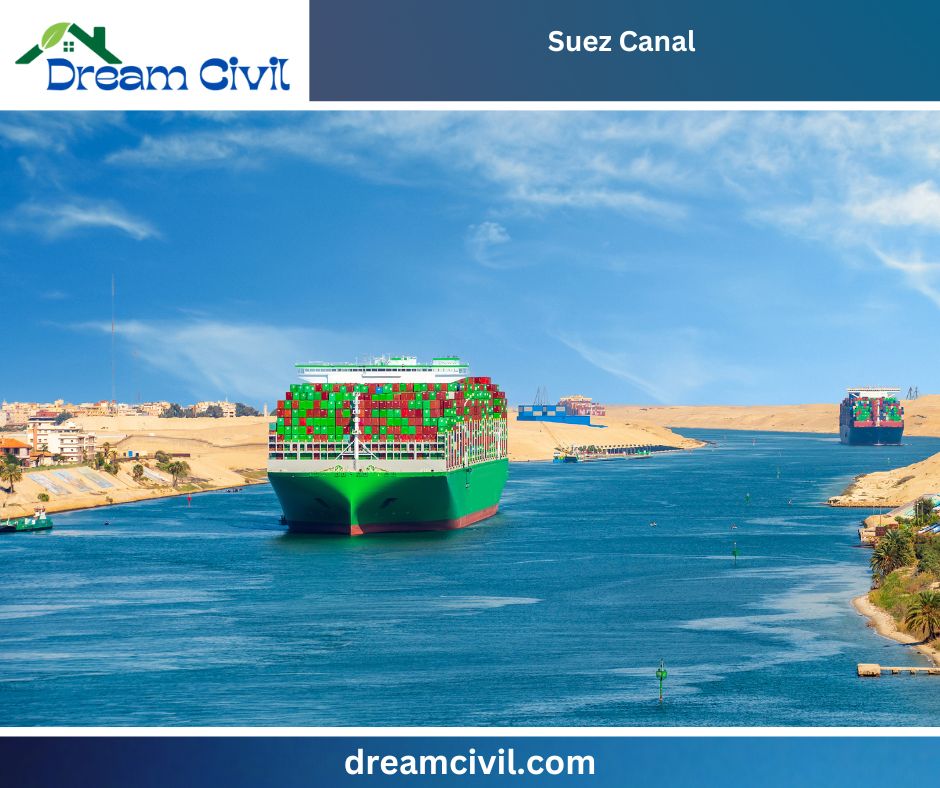Table of Contents
1. Suez Canal
✔ The Suez Canal is an artificial artificial sea-level waterway. This canal is situated in Egypt.
✔ This canal connects the Mediterranean Sea to the Red Sea through the Isthmus of Suez, separating Africa and Asia. It is also a part of the Silk Road that connects Europe to Asia.
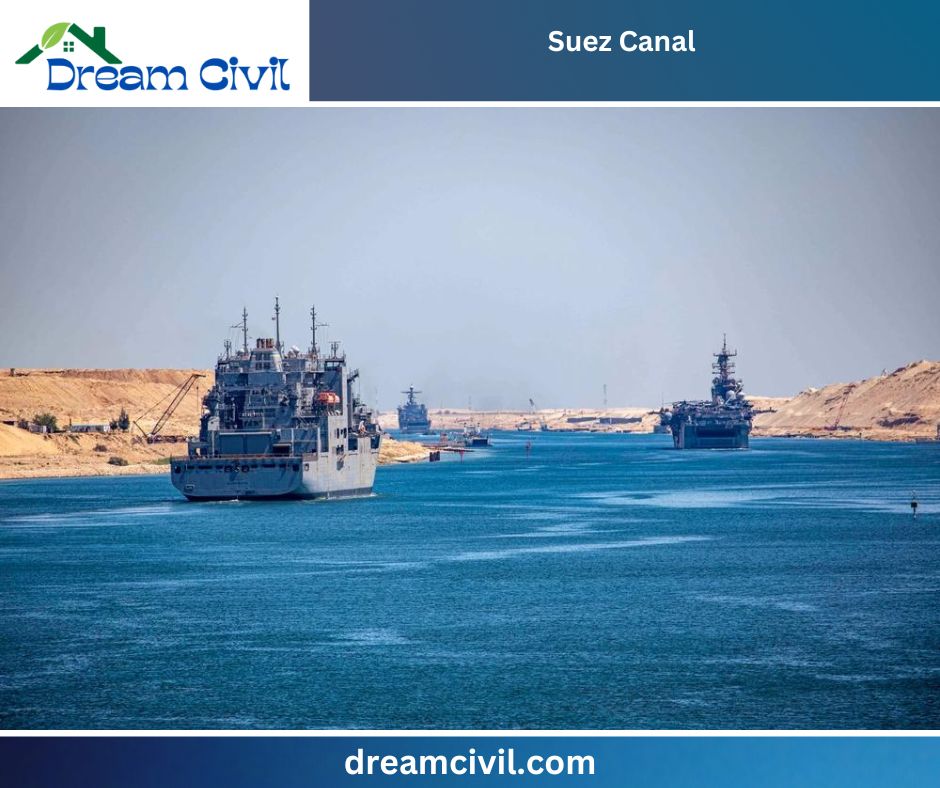
✔ In 1854, Ferdinand de Lesseps, the former French consul to Cairo, agreed with the Ottoman governor of Egypt to construct a canal of 100 miles across the Isthmus of Suez.
✔ The canal’s construction ran from 1859 to 1869 and was made under the regional authority of the Ottoman Empire.
✔ When this canal was newly built, it was 164 km long and 8 m deep. After many enlargements, it is 193.30 km long, 24 m deep, and 205 meters wide.
✔ It consists of the northern access channel of 22 km, the canal itself of 162.25 km, and the southern access channel of 9 km.
✔ The construction of the Suez Canal cost $100 million, which was more than double the original estimate.
2. Construction and Technical details of Swiz Canal
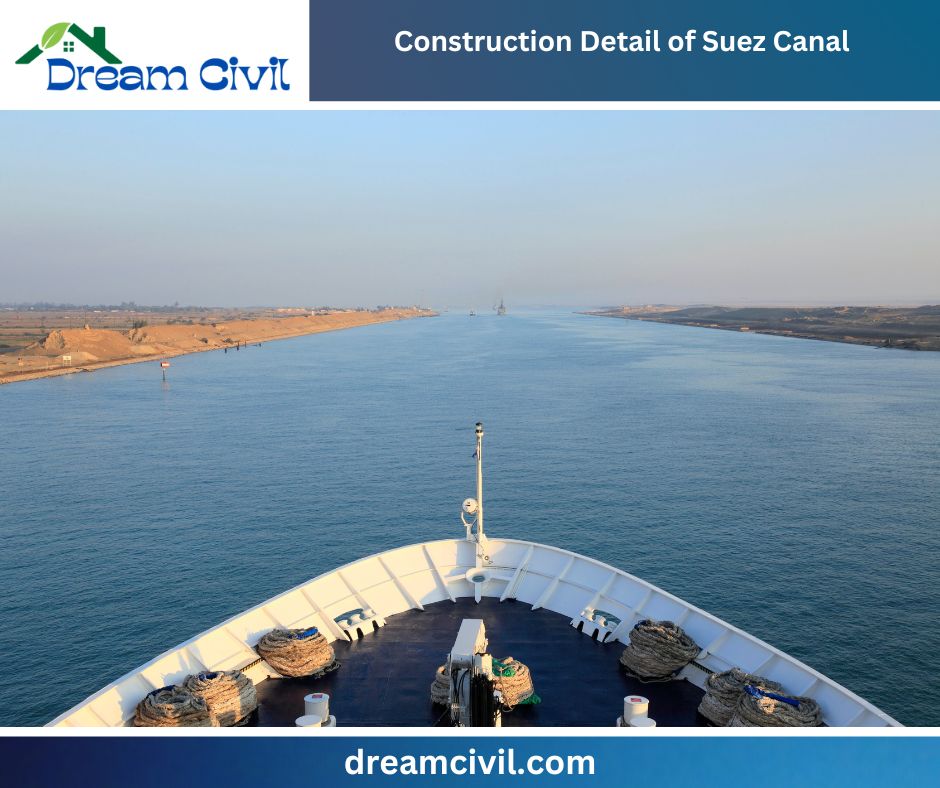
| Title | Detail |
| Name | ✔ Suez Canal (قَنَاةُ ٱلسُّوَيْسِ, Qanātu s-Suways) |
| Length | ✔ 193.30 km |
| Construction cost | ✔ $100 million |
| Constructor | ✔ The Universal Company |
| Construction started | ✔ April 25, 1859 |
| Construction Ended | ✔ November 17, 1869 |
| Owner | ✔ Suez Canal Authority |
Endpoint | ✔ Suez Port |
| Start point | ✔ Port Said |
| Navigation Authority | ✔ Suez Canal Authority |
| Location | ✔ Isthmus of Suez in northeastern Egypt |
| Maximum boat beam | ✔ 77.5 m (254 ft 3 in) |
| Minimum boat draft | ✔ 20.1 m (66 ft) |
| Minimum boat air draft | ✔ 68 m (223 ft) |
| Earning | ✔ 5.61 billion USD / year ( 2020 Report) |
3. History and Significance – Controller of Suez Canal
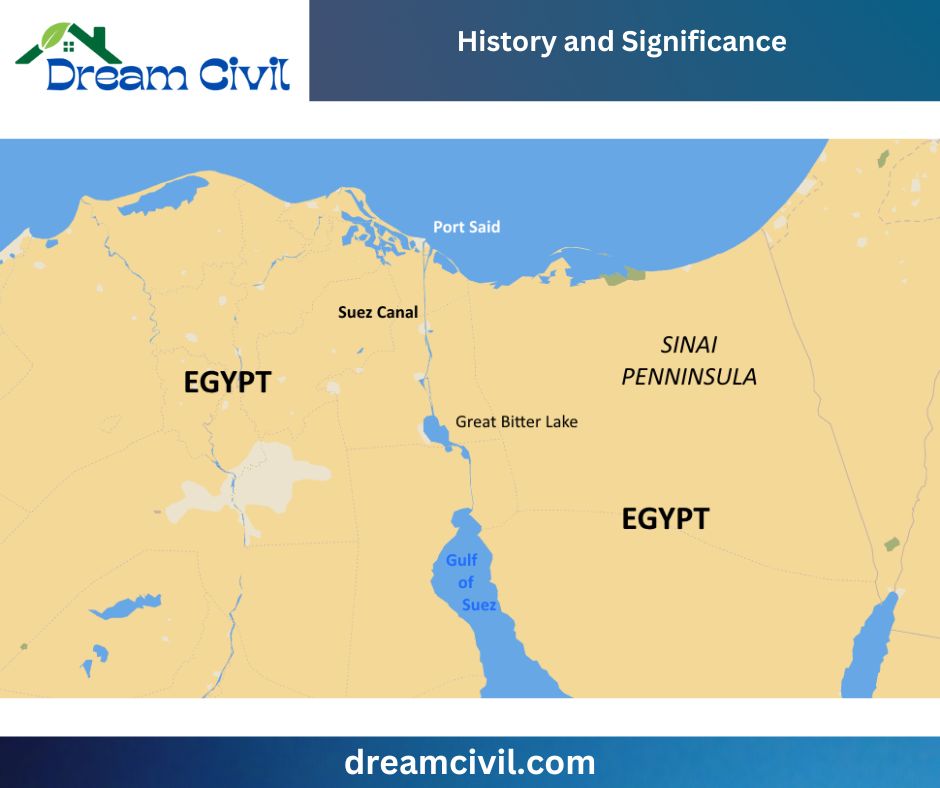
History
✔ On August 25, 1882, the United Kingdom occupied Egypt. The canal was under the handle of the privately owned Suez Canal Company.
✔ On November 14, 1936, obeying a new treaty, Britain left Egypt but still kept the Suez Canal Zone under its control.
✔ On June 13, 1956, the Suez Canal Zone was again controlled by Egyptian sovereignty following British departure and years of settlement.
✔ From October 31, 1956, to April 24, 1957, the canal stopped shipping following the Suez Crisis, a dispute that led to an Israeli, French, and British occupation of the canal zone.
✔ On December 22, 1956, the canal zone was under Egyptian control following French and British removal and the landing of UNEF soldiers.
Significance
✔ The Suez Canal has been a paramount component of global trade and transportation for over a century by diminishing travel time between Europe and Asia and improving ship navigation.
✔ Further, the canal has contributed to the monetary growth of Egypt and other sticks along its path.
✔ The Suez Canal harbors significant geopolitical importance, awarding Egypt’s influence over a crucial shipping lane and international trade.
✔ Nevertheless, Egypt and its neighboring countries have also been in friction. Due to wars and political fluctuation, the canal has been barred down several times.
✔ Nevertheless, the Suez Canal remains one of the most vital shipping trails worldwide.
✔ It is a critical link between Europe and Asia and is crucial in global trade and shipping.
4. Problems During the Construction of the Suez Canal
I. During the construction of the Suez Canal, many difficulties were faced, such as a straight connection between the Mediterranean and the Red Sea was taken as impossible over concerns that they lie at distinct levels of altitude.
II. Ten thousand slave laborers were found dead due to chlorella and other causes.
III. Many sharks were found in the Suez Canal during Fishing a few times, making laborers run away.
IV. The excavation took ten years, and an estimated 1.5 million people worked on the project. Unfortunately, due to the above problems, construction costs reached $100 million, more than double the estimated cost.
5. Suez Canal – Blockage
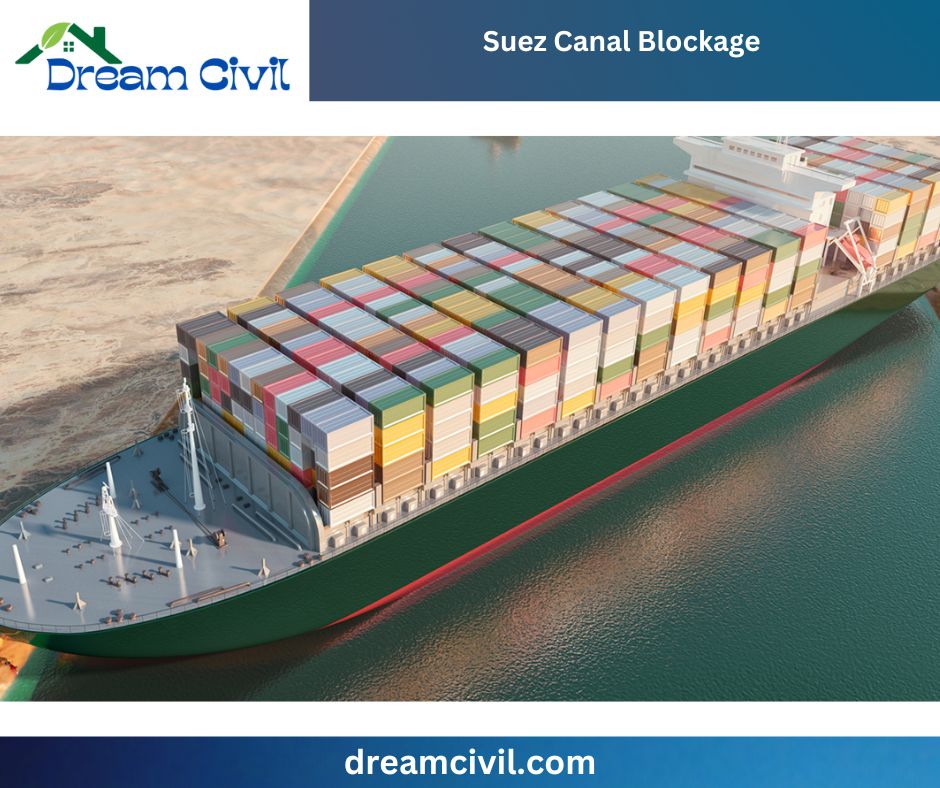
✔ The Suez Canal has often been a ship blockage due to human error and improper management of water transportation. The Suez Canal has been five times blocked.
✔ The Suez Canal was blocked for the first time in 1956 after a British-French-Israeli invasion.
✔ Next, the Suez Canal was blocked when Egypt entered a war with Israel, and the canal was stopped for eight years.
✔ In 2006, a boat got stuck in the waterway and caused the blockage of the canal.
✔ On March 23, 2021, the Suez Canal was blocked for six days after the grounding of Ever Given, a 20,000 TEU container ship.
✔ The Suez Canal crisis cost $400 million per hour or $6.7 million per minute in delayed goods, according to Lloyd’s List estimated.
✔ The 1300-foot Ever Given moved aground in the Suez Canal on March 23. It blocked the width of the waterway, creating a global shipping traffic jam with vessels hooked on two sides of the channel as they waited for it to be opened. Other ships rerouted around the canal.
✔ The government didn’t excavate a second lane along the southern segment of the canal during the enlargement because it would need massive money for the surplus investment, according to Mr. Darwish, the Ex-head of the Suez Canal economic zone.
✔ Dohnalek said to neglect another Suez Canal-type crisis, “Every company needs to have multiple sourcing options in place, as we learned during the pandemic.”
6. Ownership and Management
✔ The Suez Canal is operated and owned by the Suez Canal Authority (SCA), an independent Egyptian state-owned authority.
✔ After the Egyptian government nationalized the Suez Canal Company, which had previously operated the canal, the SCA was established in 1956.
✔ Responsibly, the SCA supervises the operation and maintenance, upkeep, and blossoming of the Suez Canal and places the fees that ships must pay to use the canal.
✔ As a significant income seed for the Egyptian government, the SCA plays a decisive role in the Egyptian economy.
✔ The SCA is shown by a delegation of directors appointed by the Egyptian president, who establishes the SCA’s guidelines and strategies.
✔ The SCA is also subject to the Egyptian government’s custody.
✔ The SCA has a long history of efficient and efficient surveillance, defending, and developing the Suez Canal into one of the world’s most decorated and vital shipping canals.
✔ Moreover, the SCA has yielded notable revenue for the Egyptian government.
✔ The SCA has recently triggered modernization and development projects to augment the channel span and efficiency.
✔ The SCA has also glorified the Suez Canal as a tourist appeal.
✔ Overall, the SCA is an agreeably managed and efficient organization with a consequential role in Egyptian scrimping and global trade.
7. Tourism and recreation
I. Suez Canal Authority Headquarters
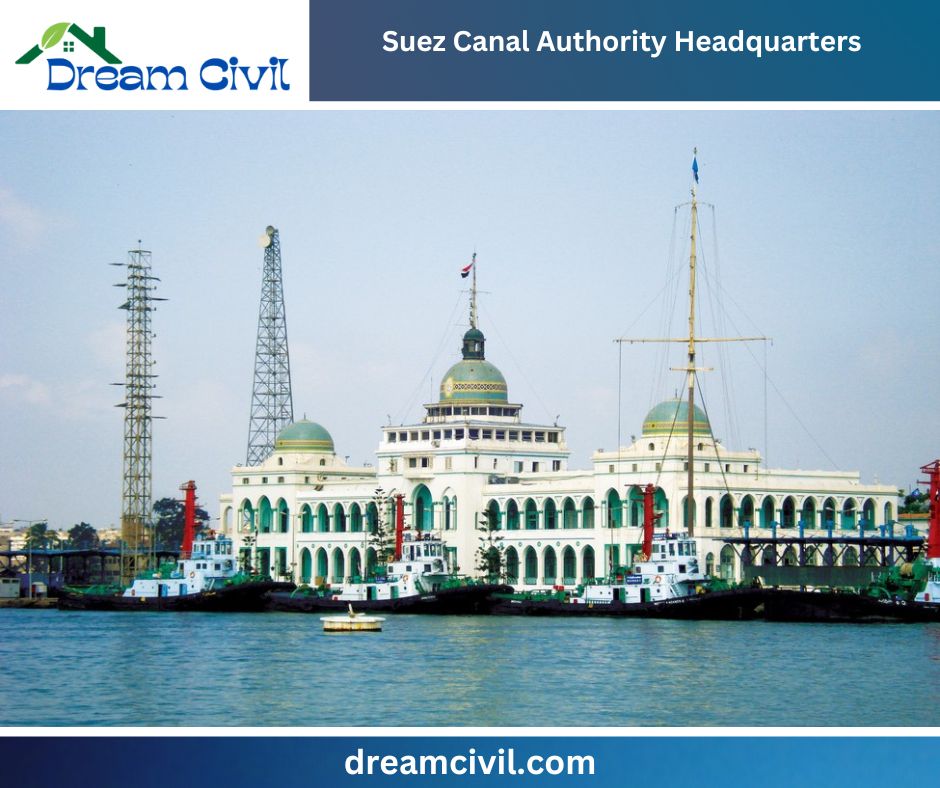
✔ Sightseers can visit the Suez Canal Authority headquarters to discover the canal’s construction, maintenance, history, and effectiveness in international trade.
II. Suez Canal Museum
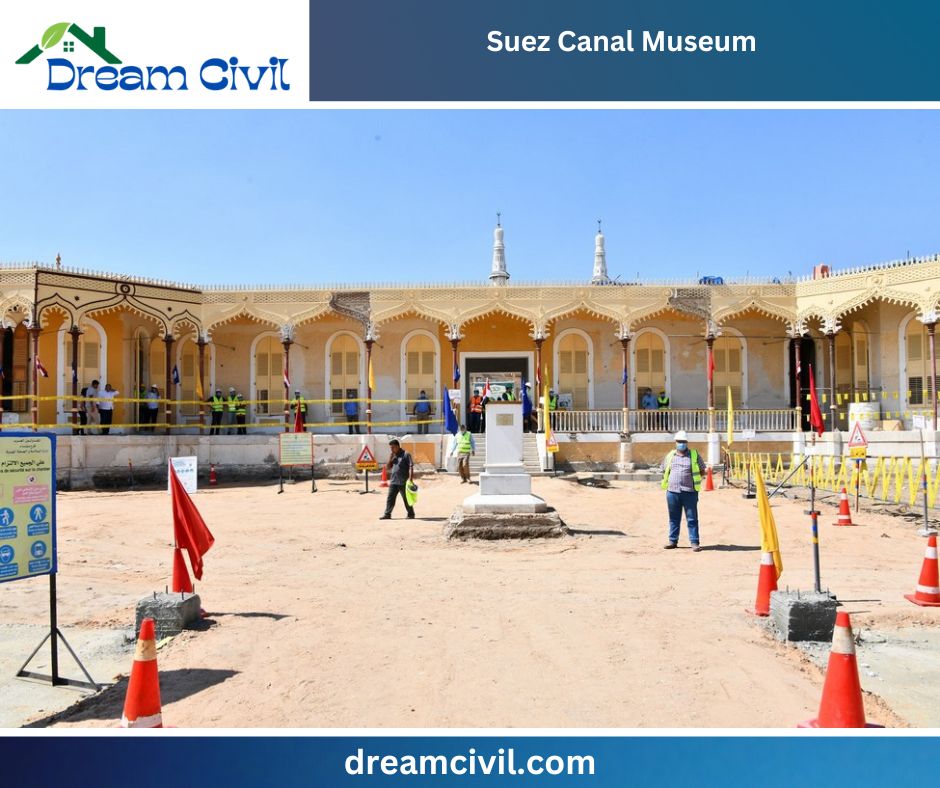
✔ A museum devoted to the history and development of the Suez Canal offers worthwhile insights into its position in international commerce.
✔ Visitors can see relics, records, and displays related to its construction and procedure.
III. Sightseeing Cruises
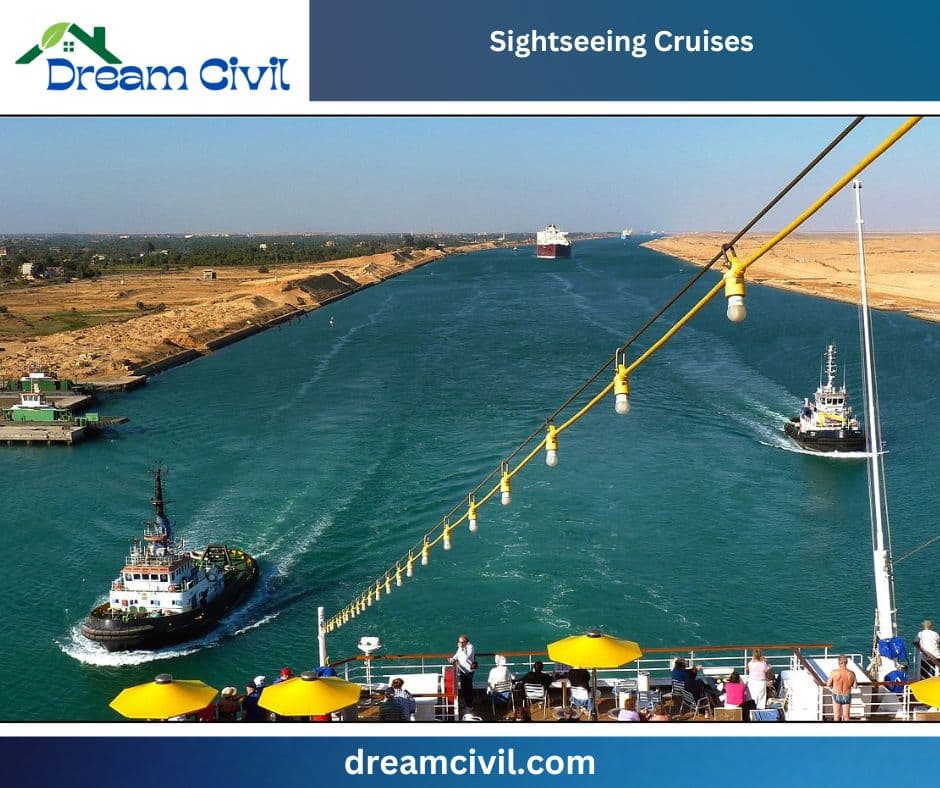
✔ Tourists can notice the operation of the Suez Canal up close, attend to the passage of large vessels, and appreciate the scenic views along its banks, boat tours, or cruises.
IV. Suez Canal Gardens
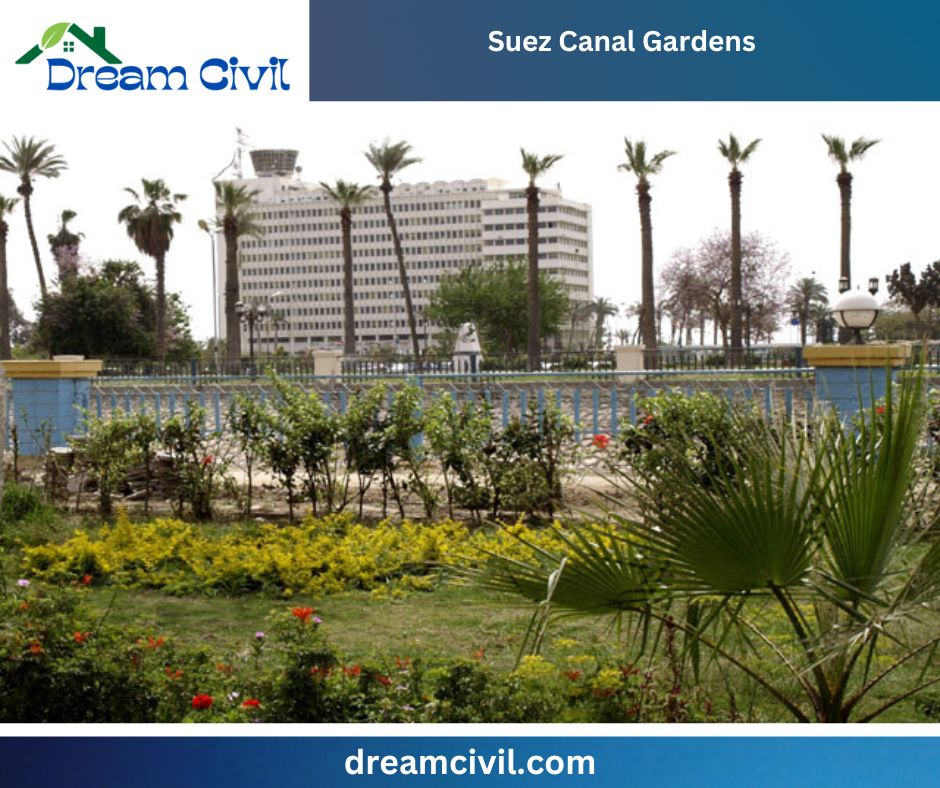
✔ The canal is encircled by exquisitely concocted gardens and parks, flawless for quiet strolls, picnics, and breathers.
V. Bird Watching

✔ The Suez Canal region is a widespread spot for birdwatchers because it is a stopover point for itinerant birds. An assortment of species can be seen during migration seasons.
VI. Fishing

✔ Fishing in the trench and bordering water bodies is a prevalent recreational activity for locals and tourists.
VII. Desert Adventures

✔ The desert surroundings proffer various safaris like camel rides, dune bashing, and stargazing under the clear desert atmospheres.
VIII. Cultural Exploration
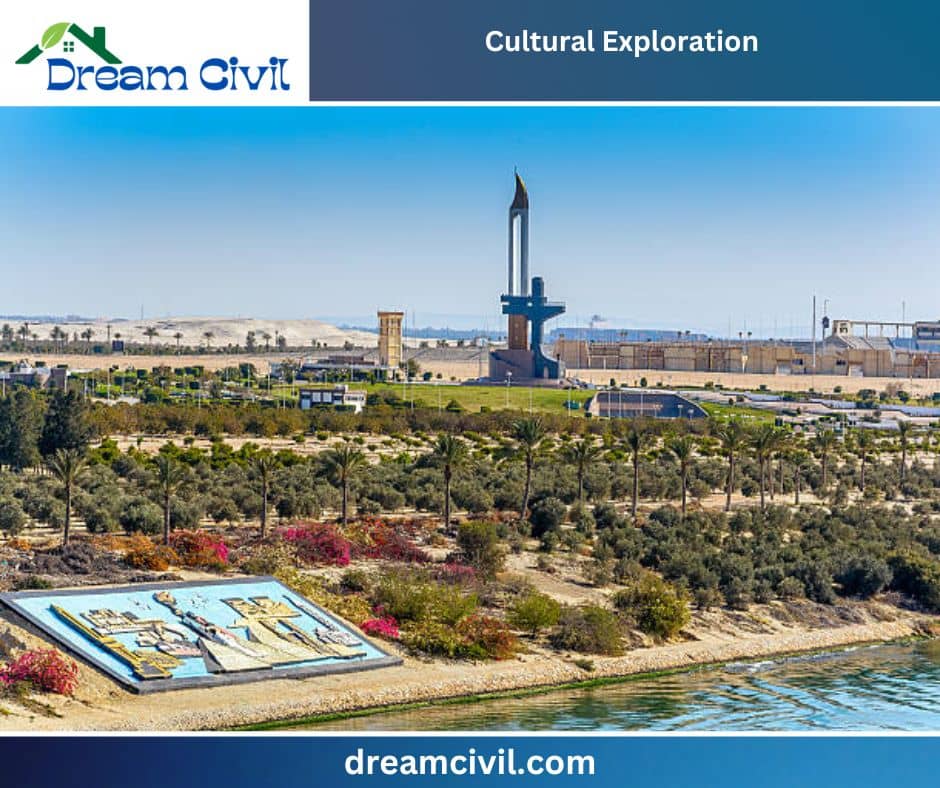
✔ Tourists can grip themselves in the local culture and heritage of the Suez Canal region by visiting nearby towns, partaking in community events, and indulging in traditional cooking and vessels.
IX. Archaeological Sites

✔ Nearby historical landmarks and archaeological sites, including Egyptian ruins, forts, and temples, present possibilities for history enthusiasts to analyze the region’s affluent past.
X. Local Markets
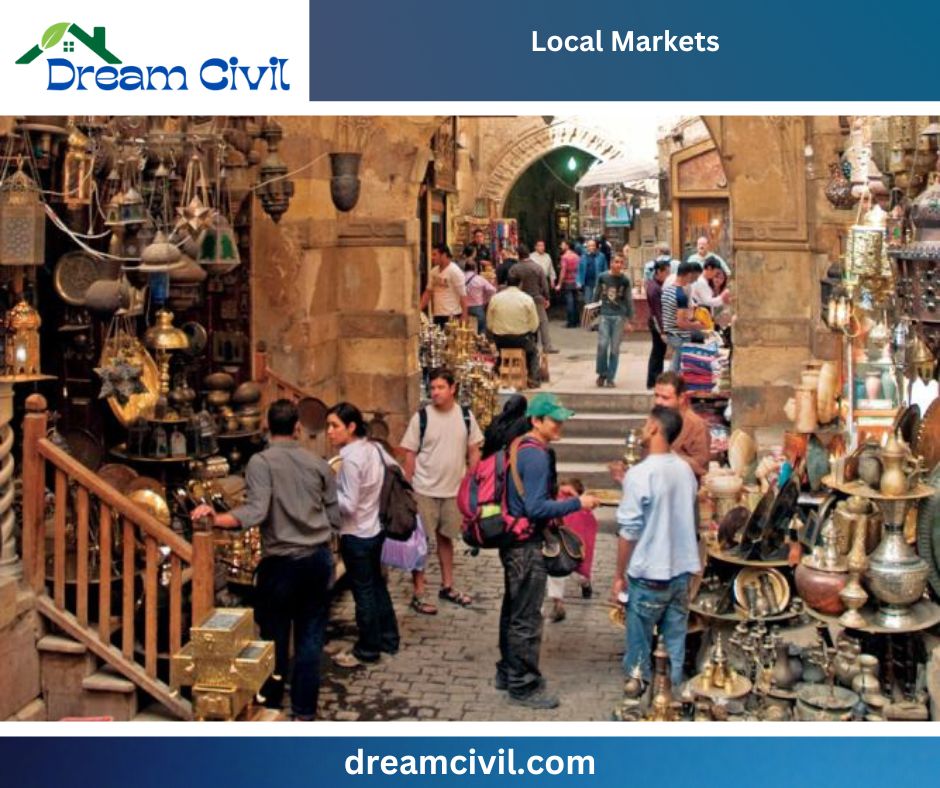
✔ Visitors can analyze markets and bazaars in townlets and cities along the Suez Canal to buy souvenirs, handicrafts, and local products.
XI. Cruising the Red Sea

✔ Destinations like Sharm El Sheikh and Hurghada, located close to the Red Sea, offer diving, snorkeling, and analyzing coral reefs and oceanic life opportunities.
XII. Local Festivals and Events

✔ Tourists should narrow to local festivals and occasions to accumulate cultural insights and appreciate entertainment.
8. Trade Statistics of the Suez Canal
| Aspect | Description |
|---|---|
| Transit Volume | ✔ Thousands of vessels transit through the canal each year, carrying various types of cargo. |
| Container Traffic | ✔ It is an essential route for container ships traveling between Europe and Asia. |
| Crude Oil and Petroleum Products | ✔ A significant portion of the world’s oil trade passes through the canal as a crucial energy route. |
| Liquefied Natural Gas (LNG) | ✔ Facilitates the movement of natural gas from Middle Eastern producers to European and Asian consumers, including LNG carriers. |
| Revenue | ✔ Tolls and fees collected from passing vessels contribute significantly to the country’s income. |
| Trade Routes | ✔ Major trade routes connecting Europe, the Mediterranean, Asia, the Middle East, and Africa. |
| Toll Rates | ✔ Tolls vary based on craft size and cargo type, impacting the canal’s competitiveness as a trade route. |
| Global Economic Impact | ✔ The temporary closure of the Suez Canal in March 2021 highlighted its vital role in global trade and the potential economic consequences of disruptions. |
| Trade Partners | ✔ Trade statistics reflect trade relationships and partnerships between diverse countries and regions. |
| Read More: 100+ Construction Tools: List |
| Verified By: Er. Bipana Kshetri Puri |

